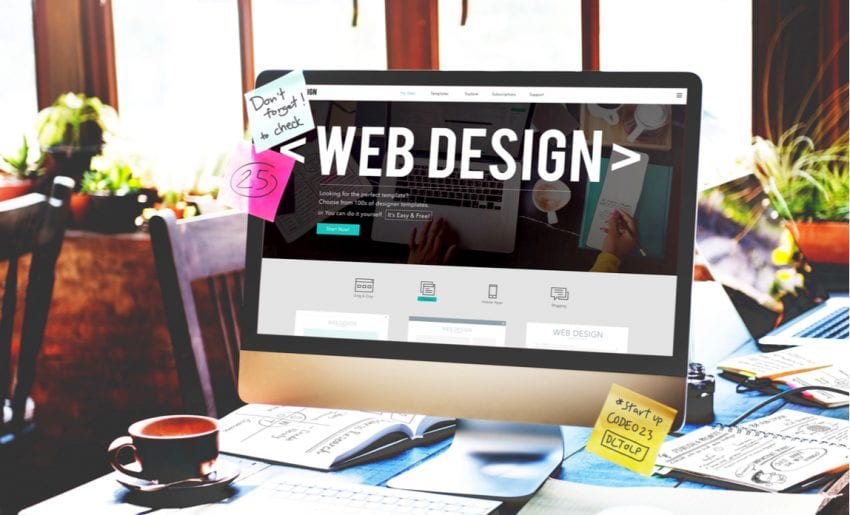No one wants to spend a fortune on a website, especially if there is no guarantee that it will bring the required return on investment. The competitive nature of the business, however, requires that most if not all businesses require an online presence that they ultimately control.
In light of this, we’ve compiled a list of seven simple things you can do to save money on your business’ website from strategy to implementation.
1. Set out your business objectives
There are not many situations where your business plan is your go-to document, but in web development, it should be your first stop. By knowing what your business objectives are – this includes everything from your product or service; your marketing strategy; who your target audience is; what your short-, medium- and long-term goals are, you will be able to hone in on your priorities and eliminate unnecessary and possibly pricey functionalities.
At the end of the day, your site needs to help your potential customer decide that your business is the one that they want to use. It should accomplish this in the most cost-effective manner possible.

2. Establish your brand identity
Once you’ve set business objectives, establish your brand identity. Your brand identity is the image of your business that you will present to the world. Your first thought here should be “look and feel”. If you’re going for a very corporate feel, your web design and all the different aspects thereof would need to reflect that – from the colors that are used in your branding to the copy used on your landing pages.
Remember that whatever “look and feel” you decide on will have to be consistent – it is not a one-time choice. For instance, the copy on your web pages, blog posts and social media posts would need to reflect your brand identity. The last thing you want is to have a really casual Facebook post that links to a website with a very formal copy. This incoherence will have a negative impact on the user experience.
3. Choose a user-friendly CMS (Content Management System)
There’s a reason why platforms like WordPress are as popular as they are according to PWD. “They provide users the ability to play an active part of managing their web properties without extensive reliance on web developers after initial development.”
Speak to your web developer about using a platform that is easy to navigate on the backend and ask them to show you around making basic changes, like creating new pages or editing existing pages on the website.
If you have an e-commerce site, and you don’t have integration, you might have to manually change things like stock, and availability. Perhaps (for a little extra) you could ask your web developer to show you some of the basics. This will help you be more independent and could make a huge difference in the long run.

4. Do your homework
Start by registering your domain (or the web address you wish to use for your business) and investigating web hosting companies to see what will fit for your business.
Next, take a look at sites that you fancy – whether it be for a look and feel or functionality – and draw inspiration from them. It might help to take a look at company web properties within your industry for insight on functionalities that might be specific and necessary to what you’re offering.
Communicate which of these elements you want included on your website, and which you don’t. This is one key way to reduce development and future maintenance costs.
5. Prioritize
Understanding what your priorities are is vital to your strategy to cut web design costs. Draw up a list of features that you think might be important for users who land on your website. From this list, determine your must-haves versus your nice-to-haves and communicate that with your web developer.
This should be an open conversation where you express your website expectations, and similarly, your web developer should express the possibilities and the costs involved in including these functionalities. It’s important to keep an open mind and take developer recommendations seriously, pushing criteria that is difficult to implement will just increase project time and frustration.

6. Create your content
Once you know which functions and information are vital to your business objectives, you will need to communicate your vision and purpose in a way that will resonate with potential customers.
If writing isn’t your strong suit, find a writer that will be able to do so successfully. This is a really important piece of the puzzle because even if you’re spending a fortune on web design, if your copy doesn’t speak to users, they will bounce off your website and you won’t reap the benefits of the money invested.
7. Use free stock images
You want your web presence to look as professional as possible, even if you’re going for a casual feel. Opting for a casual look and feel doesn’t mean that you’re compromising on quality. This is why high-res images are a must.
There are some great free stock photography sites that only require you to sign up in order to gain access to their library of thousands of free stock images. Have a look at Pexels, Unsplash, and Canva but keep in mind that selecting the correct images are vital to shaping the look and feel of your business website.
A company’s website is a crucial part of the business, connecting customers and potential customers to your product or service. Many have gone down the road of overspending on web designers but it must be noted that spend alone is not an indication of quality. By following these steps, you can cut a ton of web development costs, simply by being prepared and willing to do a bit extra to get your website designed properly the first time










